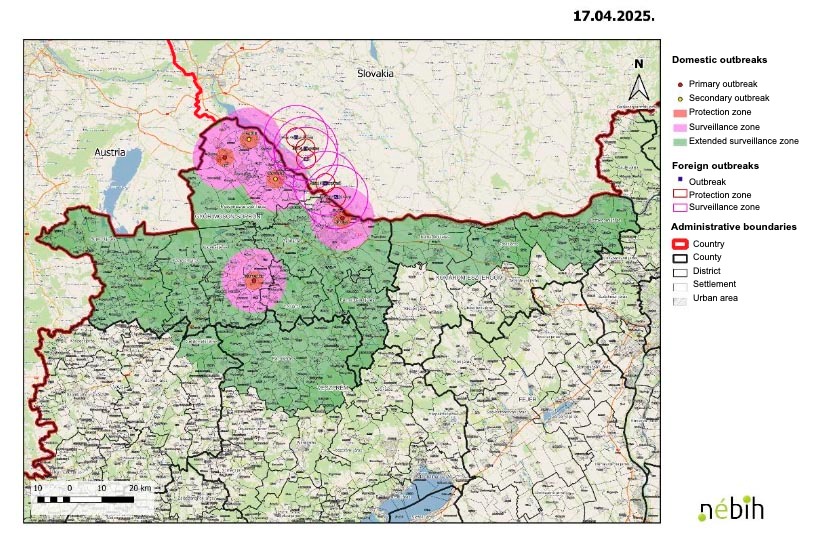On April 17, Hungarian veterinary authorities confirmed the fifth outbreak of the disease, located on a cattle farm in the municipality of Rábapordány. Although this new case, like the previous ones, is also located within Győr-Moson-Sopron county, it is located 60 km straight south of the most recent outbreak detected in Dunakiliti.
This means an extension of the additional restriction zone established by the European Commission in Hungary, including the district of Pápa in Veszprém County and the districts of Pápoc, Kenyeri, Csönge, Szergény, Kemenesmagasi, Vönöck, Csánig, Répcelak, Nick, and Kemenessömjén in Vas County.


Outbreaks of foot and mouth disease as of April 17, 2025. Source: Nébih.
April 22, 2025/ 333 Staff with data from Nébih and MAPA.




